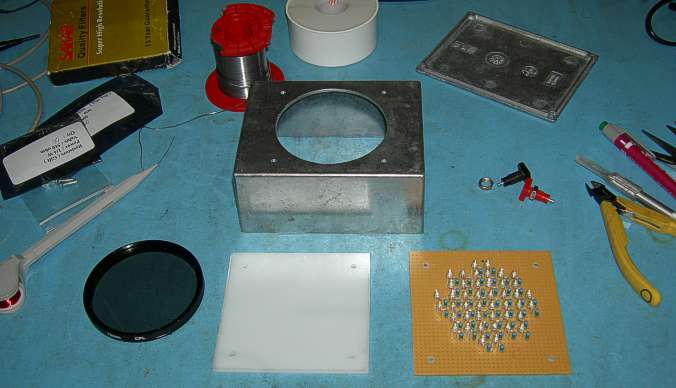

| Previous Page | Glass Blowing Menu | Main Menu | Next Page |
|---|
A polariscope can be used to 'see' the stress in glass work. It consists of an even diffuse light source and two crossed polarizing filters. The piece to be examined is held between the filters. Stress in the glass changes the polarization of the light, making the stress areas visible. It is very easy to make a polariscope from two camera polarizing filters.

The polariscope is shown partly build in the picture above. Bottom left is one of the camera filters. I obtained two 72mm filters on eBay. Bottom middle is an opal acrylic sheet to act as a diffuser for the light source. Bottom right is the light source.
The light source was made from 44 white LEDs, each with a series resistor. They are all wired in parallel and run from nominally 12V dc. It is not very efficient due to the series resistors, but it is only operated for short periods, so efficiency is not really important. The LEDs are mounted on prototyping pad board and wired up on the back using self-fluxing wire.
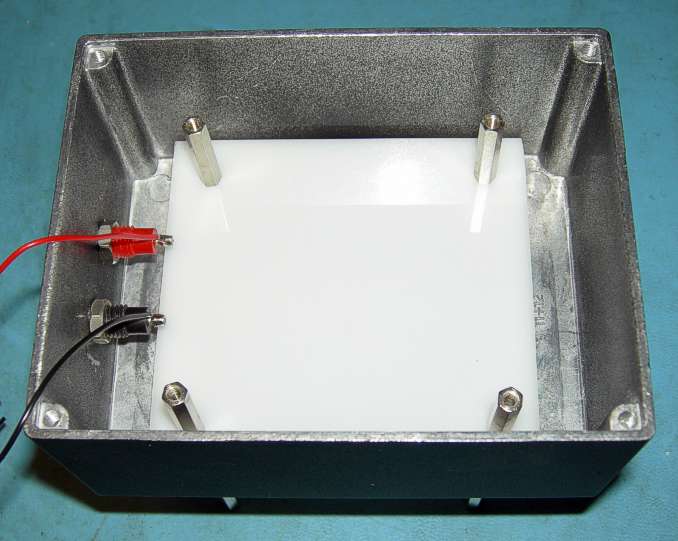
The diffuser holds the polarizing filter in place. The 4mm banana sockets on the left are for the power input.
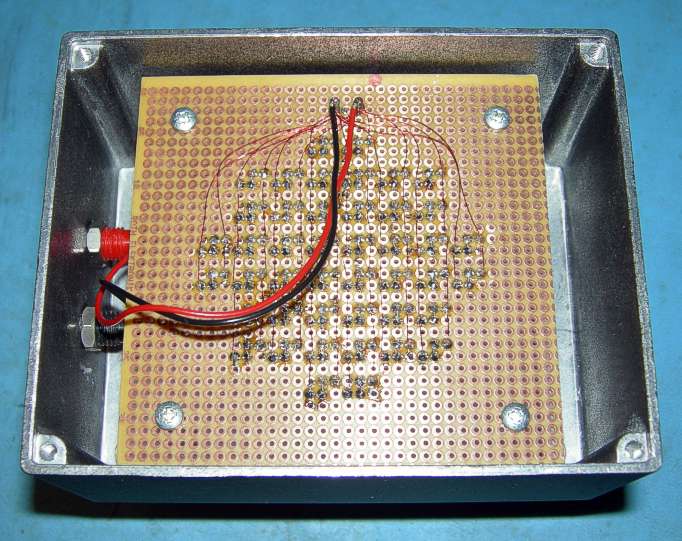
Above the light source PCB has been fitted and the power sockets connected. The rear of the PCB and wiring can be seen.
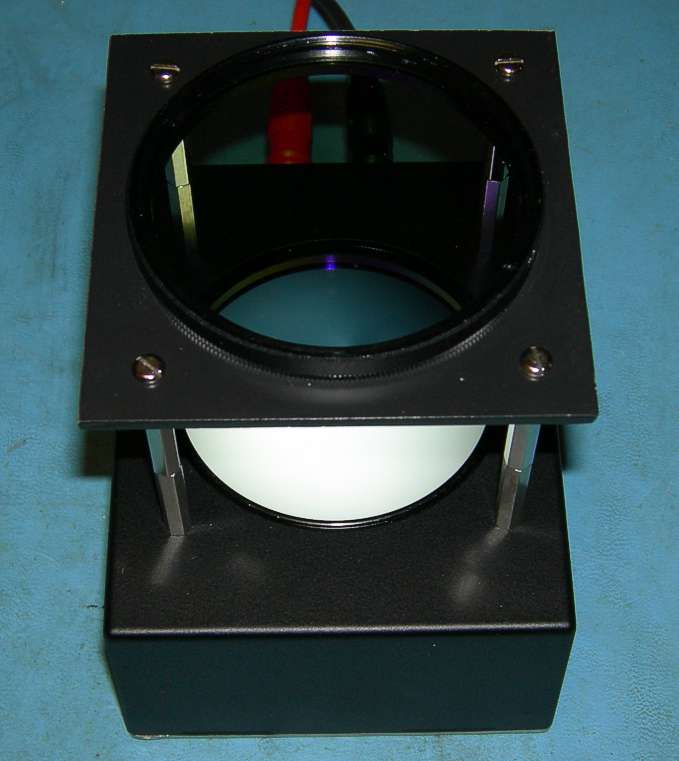
The completed polariscope is shown above. The top polarizing filter can be rotated to adjust the crossing angle of the polarizers. The power sockets are at the rear.
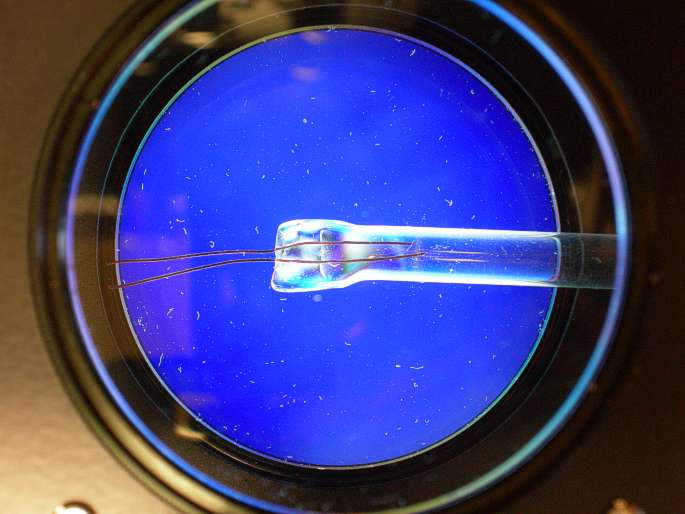
An un-annealed (and rather badly made) glass to metal seal is shown above. The stresses show up as bright white areas. Bits of dust also show up clearly.
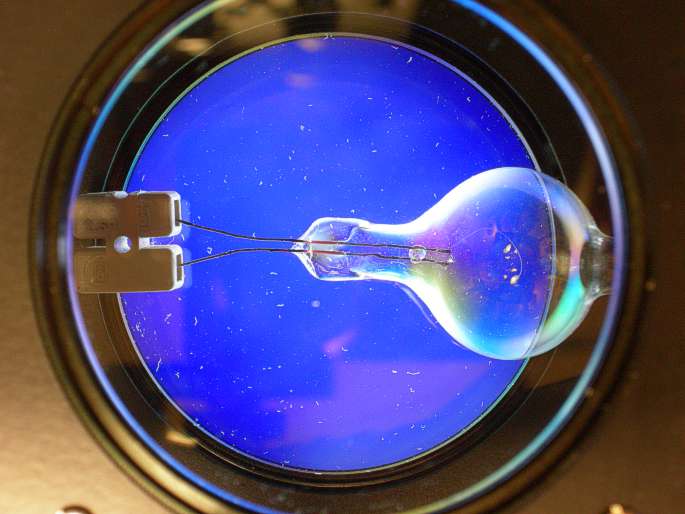
The seal above is better made and has also been annealed. There is only a faint white area in the middle of the seal. This residual stress is probably due to a mismatch between the expansion coefficient of the glass and that of the Dumet wire.
| Previous Page | Glass Blowing Menu | Main Menu | Next Page |
|---|